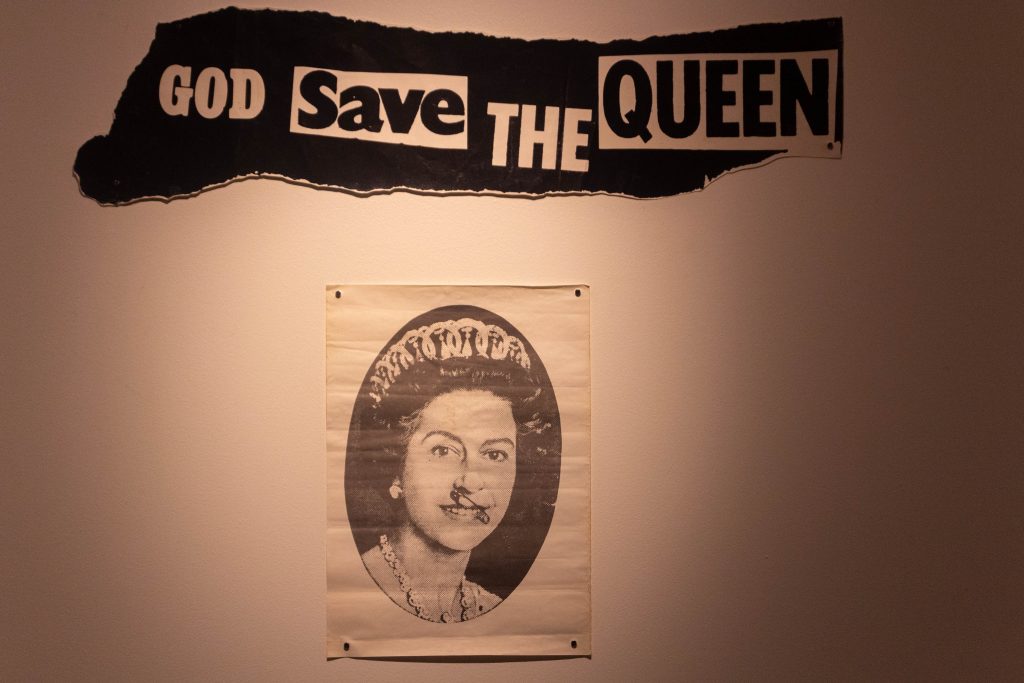On Friday, Sept. 10, the Binghamton University Art Museum unveiled a new exhibition, “Now form a band.” The exhibition displayed the works of photographer Sheila Rock and Andrew Krivine, collector and author of “Reversing Into The Future: New Wave Graphics 1977–1990.”
The exhibition includes dozens of photographs Rock took during the 1970s, which showcase the lifestyle and attitude of punk culture. In the upper level, dozens of posters and articles of clothing from Krivine’s private collection are on display. The images exude the wild yet fun energy of the subjects — although the images are all in black and white, they are still very much vibrant and eye-catching. While the articles of clothing are from another time, it is interesting seeing the influence that punk counterculture still has on mainstream fashion. Between chunky shoes and band T-shirts, it is clear that while the punk scene represented by the exhibition is mostly a thing of the past, the trends and styles that came from it are still very much alive today.
In a gallery talk, Rock spoke about the rise of the punk scene and lifestyle as well as her involvement in it in the mid-1970s.
“England was going through a dire economic stage, so a lot of people were dealing with secondhand clothes,” said Rock. “Stephane Raynor and John Krivine started [the shop] Acme Attractions as a conglomeration of youth culture and secondhand clothes, inspired by The Beatles.”
Many of Rock’s photographs captured the scenery of BOY London, the second clothing brand run by Raynor and John Krivine, or of individuals she met at the store. She said the punk scene was filled with young people looking for connection and inspiration, both things England was lacking during that time as a result of political and economic turmoil. She did, however, say after World War II, England invested in arts education allowing all children a foundation of art history and creation, so it made sense that young individuals would use art as a means of expression in response to chaos. The punk scene provided that outlet.
Andrew Krivine visited his cousin, John Krivine, each summer in England, where he began to explore the punk scene. However, it was not until many years later that his collection would amass to what it is today. Krivine’s collection included examples of deadstock 1950s suits that members of the punk culture would then add to with chains they salvaged from the garbage or straps to fit their own style.
“Raynor had a lot of sources for ‘deadstock’ clothing from the 1950s, so [John Krivine] would source items from old warehouses for Acme [Attractions] — suits, ties and so on for the store, which allowed young people to buy one or two items and feel [like they were] a part of something,” Andrew Krivine said.
Acme Attractions was not only the inspiration for the works of Rock and the collection of Krivine, but was also a creative space for many future successful artists like The Clash, The Sex Pistols and Bob Marley.
In response to the popularity of Acme Attractions, John Krivine and Raynor began BOY London, a clothing brand that is still around to this day. In fact, designers like Vivienne Westwood licensed a few of her designs to them. While Acme Attractions may no longer be around today, it served as a space for free thinking and creativity which lives on to this day.
If you are interested in viewing “Now form a band,” the collection is on display in the BU Art Museum’s Main Gallery now until Dec. 11.



